Showing Spotlights 1233 - 1240 of 2875 in category All (newest first):
 Ever since its discovery in 2004, graphene has been considered a relatively stable, high surface area platform to anchor nanostructured catalyst materials for various electrochemical and photocatalytic applications. The emergence of solution-based graphene in the form of graphene oxide has enabled new wet-chemistry approaches to the creation of graphene-based nanocomposites. A new study raises questions about the long-term stability of reduced graphene oxide in an aqueous environment where hydroxyl radicals can be present as part of the photocatalytic reaction cycle.
Ever since its discovery in 2004, graphene has been considered a relatively stable, high surface area platform to anchor nanostructured catalyst materials for various electrochemical and photocatalytic applications. The emergence of solution-based graphene in the form of graphene oxide has enabled new wet-chemistry approaches to the creation of graphene-based nanocomposites. A new study raises questions about the long-term stability of reduced graphene oxide in an aqueous environment where hydroxyl radicals can be present as part of the photocatalytic reaction cycle.
Jul 28th, 2014
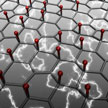 Transparent conductive coatings pervade modern technology. They are a critical component of optoelectronic devices such as smartphone and tablet displays as well as solar cells. The search for novel transparent electrode materials with good stability, high transparency and excellent conductivity is driven by the required trade-off between transparency and conductivity. In new work, researchers now have simultaneously increased the conductivity and transparency of ultra thin graphite by lithium intercalation.
Transparent conductive coatings pervade modern technology. They are a critical component of optoelectronic devices such as smartphone and tablet displays as well as solar cells. The search for novel transparent electrode materials with good stability, high transparency and excellent conductivity is driven by the required trade-off between transparency and conductivity. In new work, researchers now have simultaneously increased the conductivity and transparency of ultra thin graphite by lithium intercalation.
Jul 24th, 2014
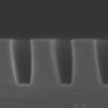 Conjugated polymer based organic photovoltaic (OPV) devices have been the subject of increasing research interest over the past years due to their potential of being light weight, mechanically flexible, semitransparent. To increase the efficiency of OPV, it is necessary to achieve a precisely controlled donor-acceptor phase separation within the short exciton diffusion length without dead ends, as well as a high hole mobility within the polymer. Now, researchers have demonstrated the effects of nanostructure geometry on the nanoimprint induced P3HT chain alignment and the performance of nanoimprinted photovoltaic devices.
Conjugated polymer based organic photovoltaic (OPV) devices have been the subject of increasing research interest over the past years due to their potential of being light weight, mechanically flexible, semitransparent. To increase the efficiency of OPV, it is necessary to achieve a precisely controlled donor-acceptor phase separation within the short exciton diffusion length without dead ends, as well as a high hole mobility within the polymer. Now, researchers have demonstrated the effects of nanostructure geometry on the nanoimprint induced P3HT chain alignment and the performance of nanoimprinted photovoltaic devices.
Jul 22nd, 2014
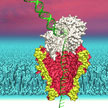 Sequencing technologies have made it cheaper and faster to read the sequence of bases on a strand of DNA. A promising technology to take these advances further is nanopore sequencing. Individual strands of DNA are moved through a nanopore gap not much wider than the DNA itself. As the DNA passes through the nanopore, continuous information is gained about the sequence of individual bases - the A, C, G and Ts that make up DNA. Researchers now have developed a nanopore sequencing technique reaching read lengths of several thousand bases.
Sequencing technologies have made it cheaper and faster to read the sequence of bases on a strand of DNA. A promising technology to take these advances further is nanopore sequencing. Individual strands of DNA are moved through a nanopore gap not much wider than the DNA itself. As the DNA passes through the nanopore, continuous information is gained about the sequence of individual bases - the A, C, G and Ts that make up DNA. Researchers now have developed a nanopore sequencing technique reaching read lengths of several thousand bases.
Jul 17th, 2014
 Aluminum has gained interest in the field of nanoplasmonics not only because it is abundant and costs a fraction of gold or silver, but also because it allows field-enhancement effects into the ultraviolet. However, it has broader resonances than silver and gold, and forms an oxide layer. Both these effects are undesirable in applications such as biosensing, in which signal strengths are reduced in the presence of resistive losses and oxide barriers. However, color printing based on the plasmon resonances of aluminum nanostructures could benefit from these properties. Researchers have now demonstrated, for the first time, the utility of aluminum nanostructures for ultrahigh definition plasmonic color printing.
Aluminum has gained interest in the field of nanoplasmonics not only because it is abundant and costs a fraction of gold or silver, but also because it allows field-enhancement effects into the ultraviolet. However, it has broader resonances than silver and gold, and forms an oxide layer. Both these effects are undesirable in applications such as biosensing, in which signal strengths are reduced in the presence of resistive losses and oxide barriers. However, color printing based on the plasmon resonances of aluminum nanostructures could benefit from these properties. Researchers have now demonstrated, for the first time, the utility of aluminum nanostructures for ultrahigh definition plasmonic color printing.
Jul 15th, 2014
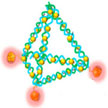 One way to eliminate the toxicity issue of synthetic nanomaterials used in nanomedicine is by working with truly biocompatible natural carriers for sensing and drug delivery applications. The emerging field of DNA nanotechnology may provide a solution. In new work, researchers have developed a novel theranostic platform which is made by utilizing a self-assembled DNA nanopyramid as scaffold for incorporation of both detection and therapeutic moieties to combat bacterial infection.
One way to eliminate the toxicity issue of synthetic nanomaterials used in nanomedicine is by working with truly biocompatible natural carriers for sensing and drug delivery applications. The emerging field of DNA nanotechnology may provide a solution. In new work, researchers have developed a novel theranostic platform which is made by utilizing a self-assembled DNA nanopyramid as scaffold for incorporation of both detection and therapeutic moieties to combat bacterial infection.
Jul 11th, 2014
 Industrial production processes, by and large, rely on robotic assembly lines that place, package, and connect a variety of disparate components. While the manufacturing world is dominated by robots, there are applications where the established processes of serial 'pick and place' and manipulation of single objects reach scaling limits in terms of throughput, alignment precision, and the minimal component dimension they can handle effectively. By contrast, the emerging methods of engineered self-assembly are massively parallel and have the potential to overcome these scaling limitations.
Industrial production processes, by and large, rely on robotic assembly lines that place, package, and connect a variety of disparate components. While the manufacturing world is dominated by robots, there are applications where the established processes of serial 'pick and place' and manipulation of single objects reach scaling limits in terms of throughput, alignment precision, and the minimal component dimension they can handle effectively. By contrast, the emerging methods of engineered self-assembly are massively parallel and have the potential to overcome these scaling limitations.
Jul 10th, 2014
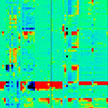 On September 15-16, 2014, come explore ways in which Alternative Testing Strategies (ATS) may be combined to create a Weight of Evidence (WOE) or 'multiple models' approach to inform context-specific decisions about risk from exposure to novel nanoscale materials. The goal is to advance a common understanding of the state of the science, early lessons, current opportunities, and next steps for developing ATS for use in decision making for nanoscale materials.
On September 15-16, 2014, come explore ways in which Alternative Testing Strategies (ATS) may be combined to create a Weight of Evidence (WOE) or 'multiple models' approach to inform context-specific decisions about risk from exposure to novel nanoscale materials. The goal is to advance a common understanding of the state of the science, early lessons, current opportunities, and next steps for developing ATS for use in decision making for nanoscale materials.
Jul 9th, 2014
 Ever since its discovery in 2004, graphene has been considered a relatively stable, high surface area platform to anchor nanostructured catalyst materials for various electrochemical and photocatalytic applications. The emergence of solution-based graphene in the form of graphene oxide has enabled new wet-chemistry approaches to the creation of graphene-based nanocomposites. A new study raises questions about the long-term stability of reduced graphene oxide in an aqueous environment where hydroxyl radicals can be present as part of the photocatalytic reaction cycle.
Ever since its discovery in 2004, graphene has been considered a relatively stable, high surface area platform to anchor nanostructured catalyst materials for various electrochemical and photocatalytic applications. The emergence of solution-based graphene in the form of graphene oxide has enabled new wet-chemistry approaches to the creation of graphene-based nanocomposites. A new study raises questions about the long-term stability of reduced graphene oxide in an aqueous environment where hydroxyl radicals can be present as part of the photocatalytic reaction cycle.
 Subscribe to our Nanotechnology Spotlight feed
Subscribe to our Nanotechnology Spotlight feed





